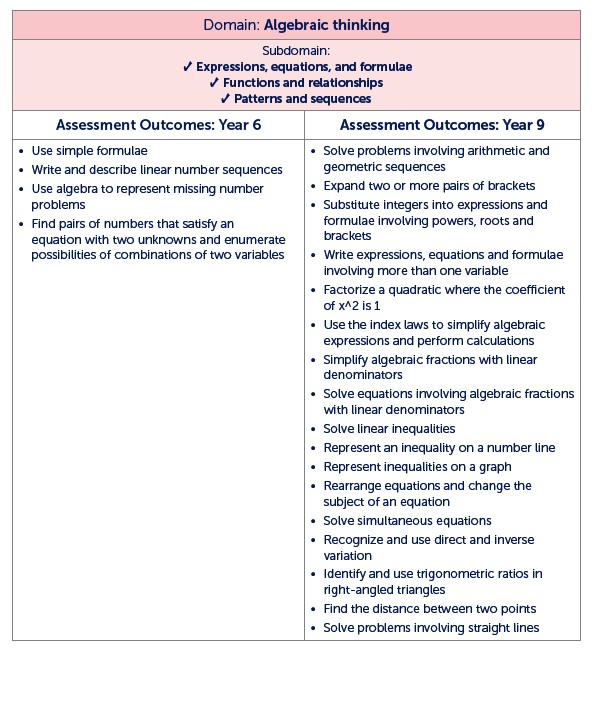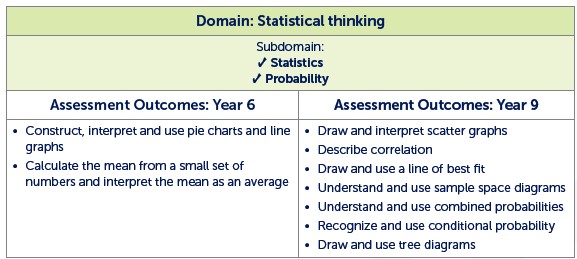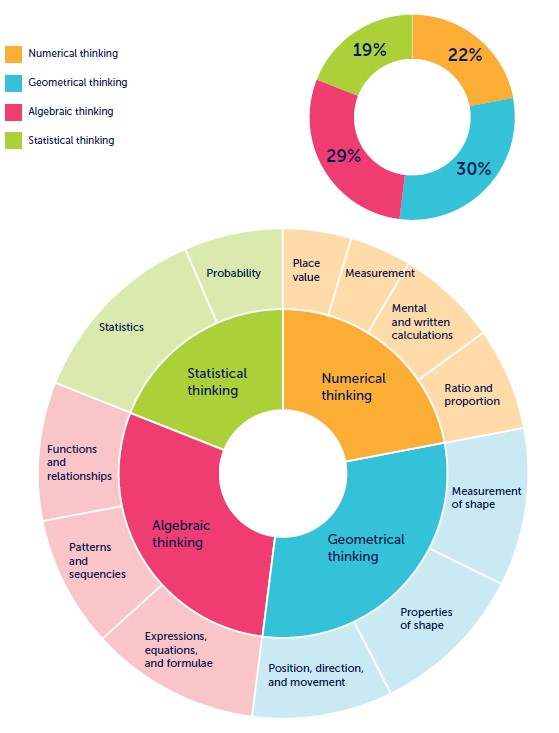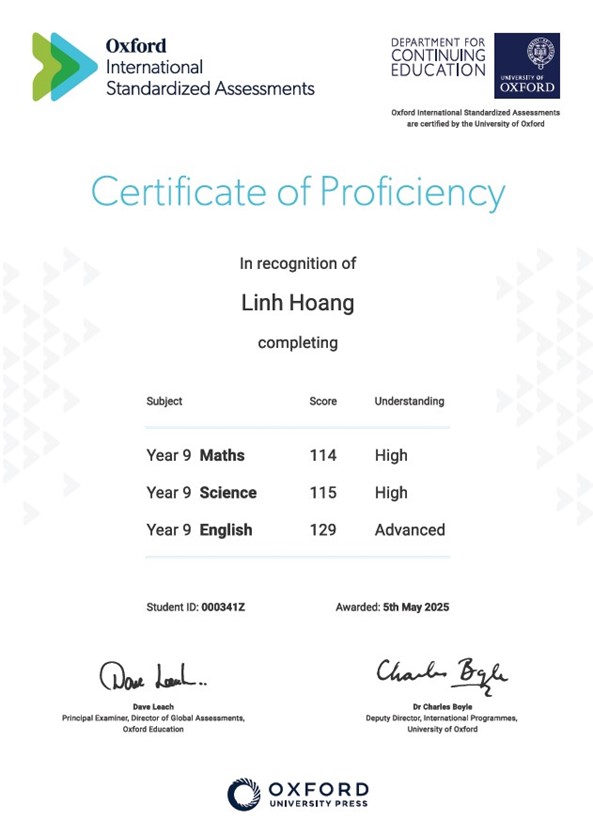For 2025 test window
The Oxford International Standardized Assessments are aligned to the Oxford International Curriculum for Mathematics. The tests are designed to provide insights into learners’ progress and achievement at key transition points at the end of Primary (typically at the end of Year 6) and Lower Secondary (typically at the end of Year 9).
This specification aims to outline the details of the Oxford International Standardized Assessments during this early access phase (March-May 2025). This phase will help to produce reports that are evidence based, standardized and benchmarked, providing better insights into learner performance.
IMPORTANT UPDATE: Please note amendment to table below for Year 9.
- Paper 1 will now be the paper that requires a calculator.
- Students will be required to bring their own for this test window.

Curriculum alignment and Assessment Outcomes
For the Oxford International Standardized Assessments, there are four content domains, which encompass what learners are expected to know, understand and be able to do in relation to Mathematics at the end of Year 6 and Year 9.
- Numerical thinking
- Geometric thinking
- Algebraic thinking
- Statistical thinking
Within each of the four domains, there are sub-domains which break down the broader content domain into the topics. These sub-domains are related to the Oxford International Curriculum Strands for Mathematics.

Assessment Outcomes
The table below provides a detailed view of the assessment content domains and sub-domains for Oxford International Standardized Assessments for Year 6 and Year 9 Mathematics as well as the Assessment Outcomes of the Oxford International Curriculum. Not all of the assessment outcomes are tested in the in the early access phase (March-May 2025).




Domain and sub-domain weightings
Year 6
The following shows the weightings of the domains and sub-domains in the Oxford International Standardized Assessment Mathematics pilot tests (March-May 2025 test window) for Year 6.

Year 9
The following shows the weightings of the domains and sub-domains in the Oxford International Standardized Assessment Mathematics pilot tests (March-May 2025 test window) for Year 9.

Practical Information
| Administration | The tests are administered in person on desktop or laptop, devices, under invigilated exam conditions. |
| Language of tests | English |
| Calculator use | Year 9 only: Test paper 1: Calculator Test paper 2: Non-calculator Please note that students will need to bring their own calculator – Calculator specifications can be found here – https://support.oisa.oup.com/technical-support/infrastructure-requirements/ |
| Accessibility and fairness | The assessment approach is influenced by the W3C WCAG 2.0 guidelines and informed by engagement with independent international accessibility experts. For more information visit: https://support.oisa.oup.com/technical-support/accessibility/?region=international For an assessment to be fair, it must: – ensure no learner is disadvantaged, including those who speak English as a second language – effectively differentiate student performance – give all learners the same opportunity to show what they know, understand and can do in relation to Mathematics. |
Reporting and awarding
Reporting
School staff can access reports for the Oxford International Standardized Assessments via the assessment platform. The reports return standardized scores for learners and for groups of learners within each school. Results and certificates can be exported to share with parents and with school colleagues.
Standardized scores within each subject domain and subdomain allow teachers to understand performance compared to the wider cohort. A standardized score of 100 represents the cohort mean, so scores above this reflect higher-than-average performance and vice versa. Via standardized scores, reports allow teachers to understand learners’ overall attainment and areas of relative strength and areas that require improvement.
School staff can navigate to view results at group and individual learner levels. Proficiency bands help to contextualize scores within each subject, domain, and subdomain. The reports help teachers to understand the group or class strengths and areas that need improvement. Average scores in each class are compared to the wider group averages, allowing teachers to understand each class’s performance within the wider cohort.
Awarding
The Oxford International Standardized Assessments are endorsed and certified by the Oxford University Department for Continuing Education, which means that the quality and reliability of the tests are aligned with the standards and expectations of the University of Oxford, a world-leading institution.
For Mathematics, the tests are auto marked and learners are awarded a certificate of proficiency according to the following performance bands:
- Foundational
- Competent
- Proficient
- High
- Advanced
The scoring and definitions for each performance band will be set following the pilot phase.

Progression and conclusion
Since these assessments are designed to be administered at the end of Year 6 and Year 9, they can be used to inform the next phase of learning. Learners can progress to Year 7 and Year 10 with confidence, knowing where to concentrate their efforts.
The benefits of Oxford International Standardized Assessments are:
- Provides inputs on learning gaps, areas of strengths and weaknesses that help schools create personalized learning paths
- Comparative (class, school) group reports to make evidence-based decision and improve quality of teaching-learning process
- Helps identify effective teaching practice through measuring learner attainment
- Reduces administration burden: automated marking process saves educator’s time allowing for more teaching time
- Quality assurance via Oxford University certification
- Deeper insights into writing skills through optional extended writing paper, externally marked by experts.
Oxford International Standardized Assessments… building confidence and providing a smooth transition between key stages of your learning journey.

